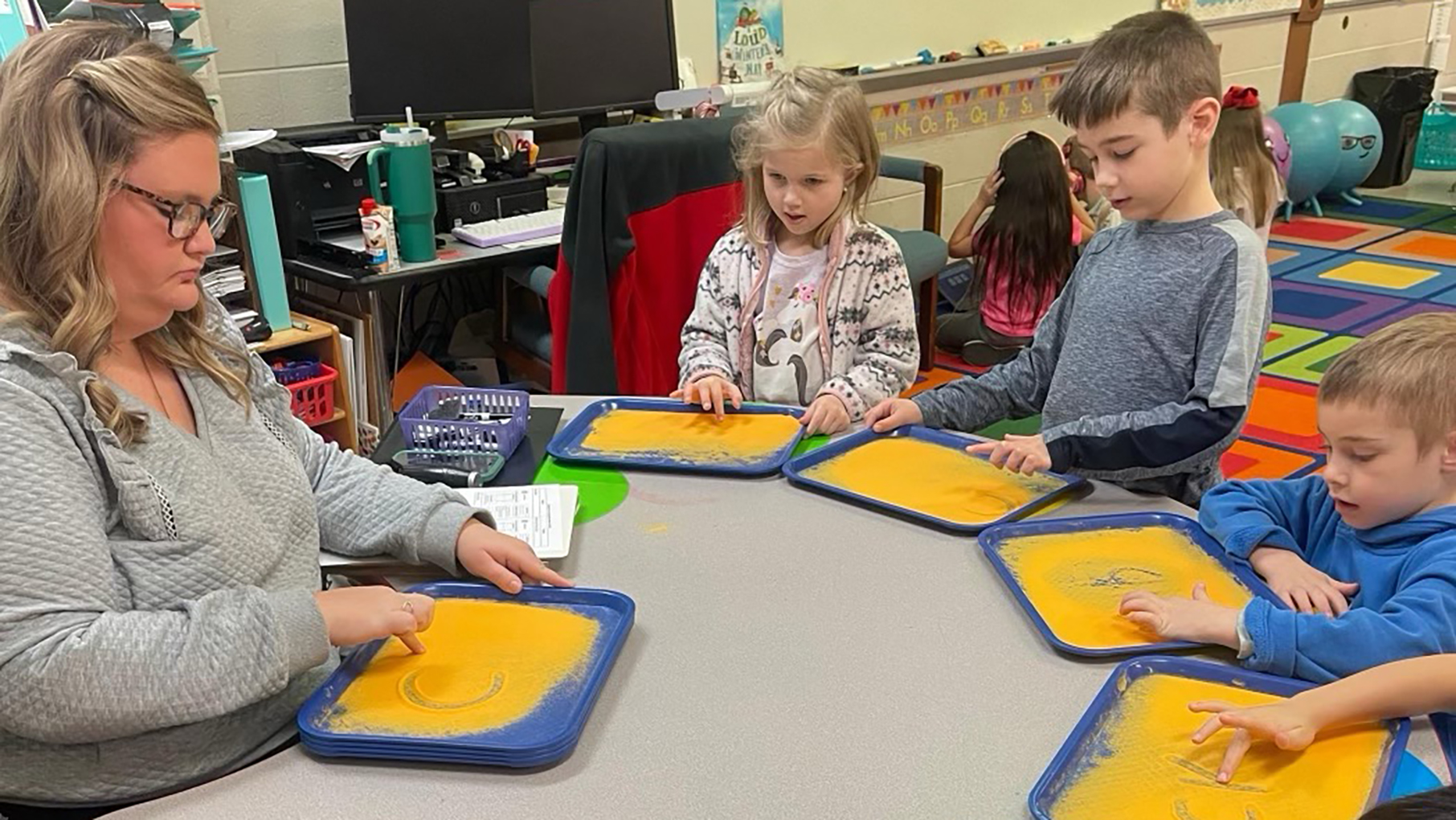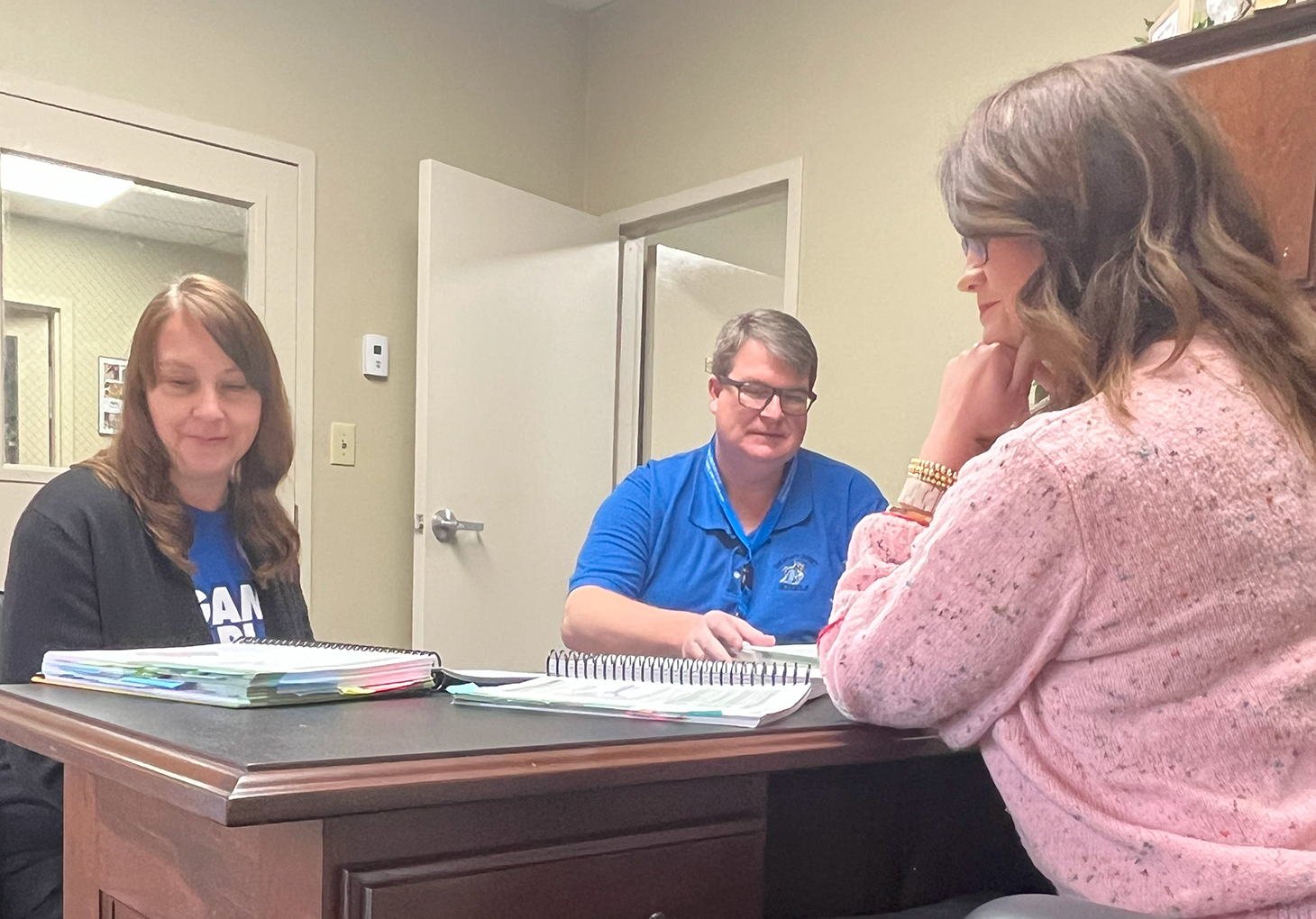Just what makes a proficient writer? The Kentucky Writing Rubric specifies criteria for evaluating writing in communicating with an audience with purpose/focus, through idea development, through structure, and through language and conventions.
Nancie Atwell, Lucy Calkins and Donald Graves, well-known leaders in writing instruction, have identified the following attributes of effective writing instruction:
- Establish a routine for writing instruction and engage students in the writing process.
- Focus upon authentic writing tasks and meaningful writing experiences that lead to publishing.
- Define the language of writing criteria through instruction with mentor texts.
- Implement explicit instruction in the writing criteria.
- Develop a sense of community with writers sharing ideas and supporting each other.
- Integrate writing with reading instruction.
- Develop a conference-rich classroom to encourage, coach, question and celebrate writing.
- Engage the teacher as a writer who reads and shares his or her writing.
The attributes of effective writing can be developed in every classroom. Atwell presents the idea of creating a literate environment where writers share their writing, discuss their reading by studying how the author crafted the message and meet with each other to discuss the clear communication of ideas. Student writers need to see what writing looks like and feel how it affects them.
But just how is a teacher to help student writers discover their hidden talents as a writer? Consider the following instructional strategies to develop some of the above attributes:
Present models of effective writing paired with writing to learn
Presenting students just with the writing criteria will only lead to confusion. Young writers must be able to define and understand the writing criteria. This is best accomplished by presenting examples of effective writing. This process has been described in a paper by Stuart Greene as “mining text.”
In this process, writers dig deeper into an expert piece of writing to learn to write through immersion and imitation. This strategy connects reading with writing because the two processes are so recursive in nature. Students learn about writing by studying effective models of writing and are immersed with explicit examples of the writing criteria through published authors’ texts.
When students read, they compose ideas and learn how ideas were crafted in order to present a clear message (immersion). When students write, they develop their intended message by pulling from their experiences in reading (imitation). The intent becomes to read for more than mere comprehension; the intent now in reading is to seek how the author developed the text in order to meet their audiences’ needs.
Consider the following instructional lesson to create a literate environment. Start by presenting mentor texts as examples of expert writing. Mentor texts are pieces that exemplify the qualities of effective writing. Many children’s picture books are excellent resources, as are student writing from the past. By sharing these texts, student writers learn the characteristics of different forms and genres. In essence, students are reading to learn about effective writing.
Begin with a question focusing upon some characteristic of the mentor text prior to the read-aloud. Define the characteristic, show it and let the students experience it. Use the language of writing found in the writing rubric when reading and introducing a writing concept.
Think about the following example. A children’s picture book presents a narrative story about a storm. The teacher starts the instruction by accessing their prior knowledge about locating the main idea of the text. The mini lesson defines the purpose focused upon a main idea, and students engage in listening for the topic of the story and what main message the author wanted the reader to understand. Through discussion, students learn to connect reading and writing in order to connect to the writing criteria.
Back map with graphic organizers
An extension to using mentor texts when creating a literate environment is to focus on how the author developed a mentor text. Teach students to work backward and introduce the use of a graphic organizer.
This process is called “back mapping,” because the teacher provides a model of how to insert ideas from a finished product into the graphic organizer during a teacher think-aloud. Student writers experience the support a graphic organizer provides in planning and begin internalizing the writing criteria.
Locate a graphic organizer targeting a specific purpose used during a reading lesson and combine reading with writing instruction. While searching for meaning in the text during reading, direct students to complete the graphic organizer. The next steps naturally involve the students utilizing a graphic organizer to plan their thinking, which then will lead to their writing.
These plans become the source of discussions between the teacher and students during prewriting. Talk about the student’s ideas prior to committing them to paper and assist him or her in learning more about the thinking that will lead to more effective communication with their audience.
Conversations with writers
Once the student writers take on developing an authentic writing task, create an atmosphere where conversations about writing occur during different stages of the writing conference. Teachers create an atmosphere where conversations about writing occur by first modeling effective questioning during the Authors’ Share Chair and then conducting writing conferences with students.
The Author Share Chair – which is an opportunity for a student to present a current struggle in their writing to fellow writers – presents such a natural opportunity for students to share their writing and receive feedback from the teacher and peers. Student writers listen, then ask questions centered around what they understand and what they still want to know. The writer’s peers listen for ideas and how effectively those ideas are communicated.
Consider this example. The teacher has presented mentor texts to teach students about developing the purpose, audience awareness, idea development or structure of how ideas are presented in writing. As student writers engage in developing their ideas, they may want to see if their intended message is communicated effectively and if not, what is not understood by their audience.
The teacher takes the lead and asks the student to present the developing piece. The writer asks other students to listen and help them develop an area of struggle. Perhaps the writer needs help with developing action in their narrative piece. At first the teacher models questions designed to develop the writers’ understanding of the writing criteria; later students gain capacity to ask meaningful questions designed to help the writer communicate more effectively.
As the inquiry begins, questions are written down and delivered to the writer. A deeper understanding of writing through the eyes of an audience emerges. The writer now possesses specific questions to assist with revisions.
A more formal conference between the teacher and students also must occur. The focus continues to target the writer’s developing ideas and not the actual piece of writing. That may seem odd, but writing conferences present the thinking, not the final product.
Developing the craft of writing occurs within these conversations as the student writers draft in order to meet a specific audience’s need. Each conference is unique based upon the need of the writer, and each writing conference is different from the last. Revision becomes seamless with the recursive nature of writing.
Ensure student writers have created a focused purpose for an authentic audience first by asking:
- “To whom are your writing?
- “What do you want your audience to know/learn?”
Next, ask questions focused upon developing ideas specific to the genre, such as:
- “What was the most important time when …?”
- “How can you describe … so your audience feels the action?”
Then ask questions beginning with the “how,” the “why” and the “what,” and students will begin their conversation with elaborated details that lead to revisions. Those questions teach the student writers how to more effectively apply the writing criteria and connect with their authentic audience.
The goal of every classroom should be to create a literate environment. Several instructional approaches have been presented to accomplish that goal. With these instructional strategies, your classroom will develop into a writing workshop filled with opportunities and possibilities for developing writers. Writers will focus upon their thinking, mold their thinking and capture their thoughts.
It’s time to develop students’ hidden treasures of thought while they discover how to effectively communicate with their intended audience.
Sheryl Block is a Louisville Writing Project Fellow. She presents sessions at the Louisville Writing Project mini-conferences on developing an authentic audience, conferencing skills, analyzing student writing in order to develop instruction and developing standards-based individual education plans for written expression. While teaching, she operated a writing workshop with her 4th-grade students. Her classroom and student writers were the subject of several KET videos addressing the teaching of writing. She also represented the southeast region as the teacher for the Annenberg Channel’s video series, “Inside Writing Communities.”



Leave A Comment